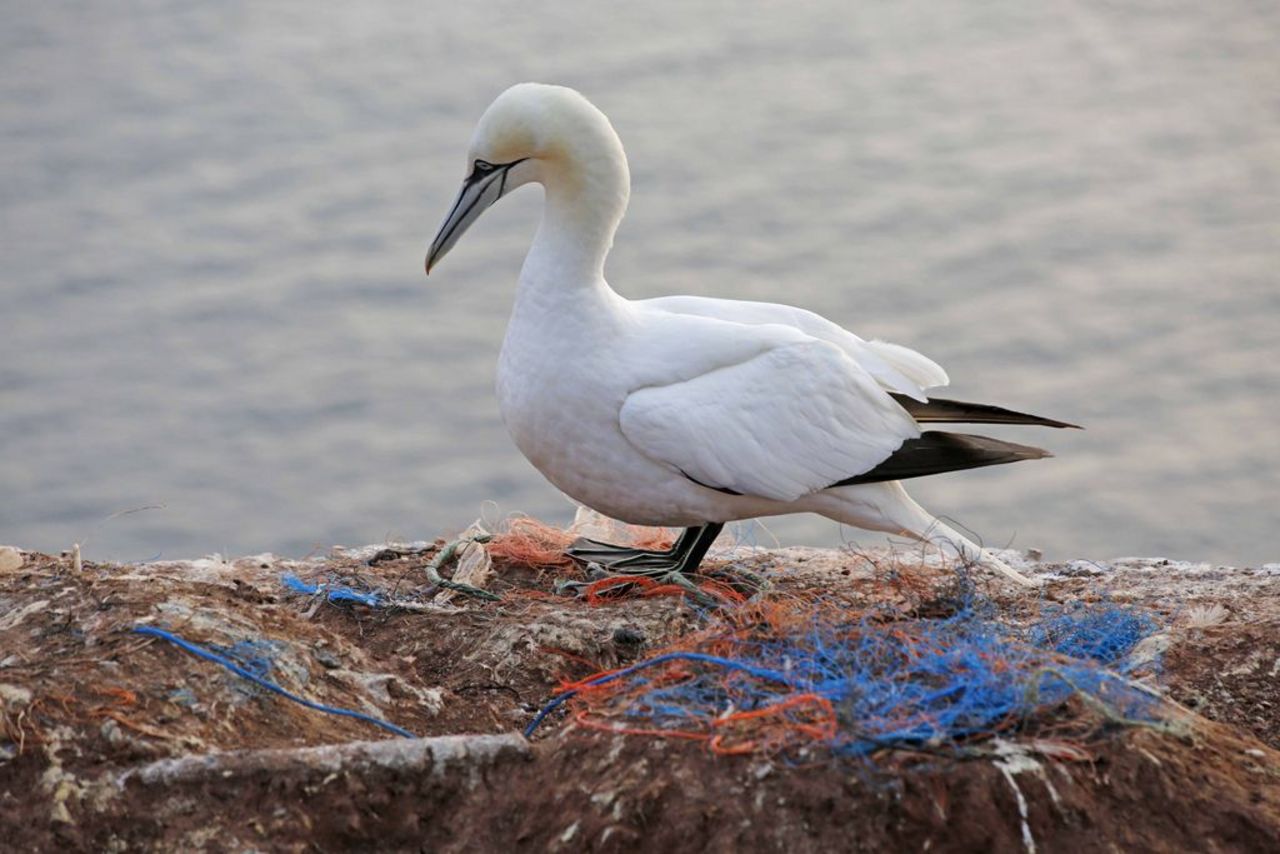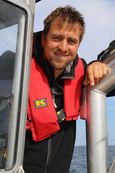Project
Reduction of plastic waste from the brown shrimp fishery through gear modifications (DRopS)

DRopS – Dolly Rope Suspension
Polyethylene ropes are often mounted on beamtrawls in the North Sea to prevent net damages due to abrasion. The, so called, dolly ropes are wiped off after a short while and get lost at sea.
Background and Objective
Only a small part of the plastic waste in the sea is visible to humans as a large part of it remains under the sea surface or far away from the coasts. On the shores of the North Sea, colorful, mostly orange or blue threads, ropes or balls are particularly visible during a boat trip or while walking on the beach.
Although the origin of plastic waste is often difficult to determine, it is likely that a large proportion of these colored plastic fibers originate from bottom trawling. Especially in the beam trawl fisheries directed to sole and North Sea shrimps, the nets are dragged very close to the ground due to the design.
To protect the bottom side of the gear, it is often provided with abrasion protection. Various materials can be attached to the meshes of the gear in order to prevent abrasion of the material on the seabed - especially of the codends.
One of the most common materials used as scuff protection in bottom trawling are the so-called „dolly ropes“. These are Polyethylene ropes (PE ropes), which are cut to size by the fishermen and woven into the net material.
During fishing, the dolly ropes fray very easily and parts of it break off. Within two weeks 10 to 25% of the material has already been torn off. After this time, the remaining cords become tangled or entangled, reduce their flexibility and cause sand and gravel to clog. As a result, the remaining dolly ropes are replaced.
The aim of this project is to develop and test trawl gear modifications that reduce or prevent the contact of the gear with the seabed, thus making the use of dolly ropes as abrasion protection superfluous. Initially we will focus on the shrimp fishery in the North Sea.
Approach
1. Change of gear design
The construction of a gear has a decisive influence on the behavior of the gear while fishing and also on how close the gear comes to the seabed. The following modifications are potential candidates:
- Cutting of the gear: The cutting of the beamtrawl net may provide opportunities to further lift the codend from the ground. So far, side net panels (wedges) are installed between upper and lower net panel, which are aligned towards the seabed. In this project side panels will be tested, which are oriented upward, so that the distance between the seabed and the gear, in particular the codend, increases.
- Achieving a constant cylindrical shape of the codend through ring reinforcements (strengthening ropes) and thus preventing increased diameters at the end of the codend: The end of codends in T0 mesh orientation typically balloon with increasing catch size. This change in circumference could be limited by strengthening ropes.
- Testing of hydrostatic and hydrodynamic floating devices, such as kites.
- Orientation of the meshes: It is known (e.g. form previous experiment in the CRANNET project) that the orientation of the mesh material has a significant influence on the shape of the codend during the catch process. Meshes in T90 but above all meshes in T45 orientation reduce the perimeter increase of the codend as the catch size increases in the codend.
2. Reduction of the catch of heavy material
The codend is also pulled down by catching heavy organisms (e.g., clams and sea urchins) or heavy material (e.g., stones and sand). Accordingly, one approach is to reduce the amount of these heavy materials - especially as they are unwanted bycatch. Several options are possible, such as:
- Benthos Release Panel (BRP): is already partially used, or there are studies on their use. In this case, a large-meshed gear is installed in the bottom of the gear, through which shells, stones, etc. can fall. One problem here is, of course, that this BRP can also lead to catch losses of target species.
- Changes of the ground rope: Reports from the fishery and own investigations show that the construction of the ground rope has a decisive influence on how much heavy material can be found in the codend.
Our Research Questions
Which gear modifications can reduce or avoid the contact between the gear material and the seabed?
How practicable are the newly developed modifications on board commercial fishing vessels?
Does the developed gear modification affect the catchability of the gear? It is important to distinguish the effect of the not-use of dolly ropes (e.g. due to changed selectivity) and the effect of the net modification.
How does a modified gear behave in long-term use, or can gear damage be reduced to an acceptable level in the long term?
Is it possible to transfer the solutions, developed within the project, to other fisheries?
Filme DRopS - Netzmodifikationen und Grundgeschirr
Videoaufnahmen von bereits getesteten Modifikationen am Netz sowie vom Grundgeschirr, die während der ersten Forschungsfahrt von der FFS Solea im Rahmen des Projekts „DRopS“ entstanden.
Thünen-Contact

Involved Thünen-Partners
Funding Body
-
Bundesland Schleswig-Holstein
(national, öffentlich) -
Bundesland Niedersachsen
(national, öffentlich) -
European Union (EU)
(international, öffentlich)
Duration
1.2018 - 8.2021
More Information
Project funding number: EMFF-ID: NI-1-16-001
Project status:
finished
Publikationen
- 0
Stepputtis D, Noack T, Lichtenstein U, Hammerl C, Santos J, Mieske B (2022) Verringerungen von Kunststoffmüll aus der Krabbenfischerei durch Netzmodifikationen - Dolly Rope Suspension (DRopS) : Projekt-Abschlussbericht. Braunschweig: Johann Heinrich von Thünen-Institut, 180 p, Thünen Rep 101, DOI:10.3220/REP1670832160000
- 1
Dau K, Stolte A, Lichtenstein U, Möllmann N, Oberdörffer P, Wegner K, Werner S, Wichmann W (2020) Empfehlungen zur Entsorgung von Fanggeräten aus der Fischerei : AG Seebasierte Einträge des Runden Tisches Meeresmüll Unterarbeitsgruppe "Netzentsorgung" [online]. Hannover: Niedersächsisches Ministerium für Umwelt, Energie, Bauen und Klimaschutz, 37 p, zu finden in <http://www.muell-im-meer.de> [zitiert am 10.12.2020]

![[Translate to English:] [Translate to English:]](/media/_processed_/d/7/csm_Startseite-OF_03_c0dfd6e750.png)
![[Translate to English:] [Translate to English:]](/media/_processed_/a/3/csm_20181116-151457-Stella-Jerome-Fischfalle-Warnem%C3%BCnde-Dorsche-im-Netzk%C3%A4fig-5691_heller_3050c72fa2.png)
![[Translate to English:] Logo des Bundesministerium für Ernährung und Landwirtschaft](/media/allgemein/logos/BMEL_Logo.svg)